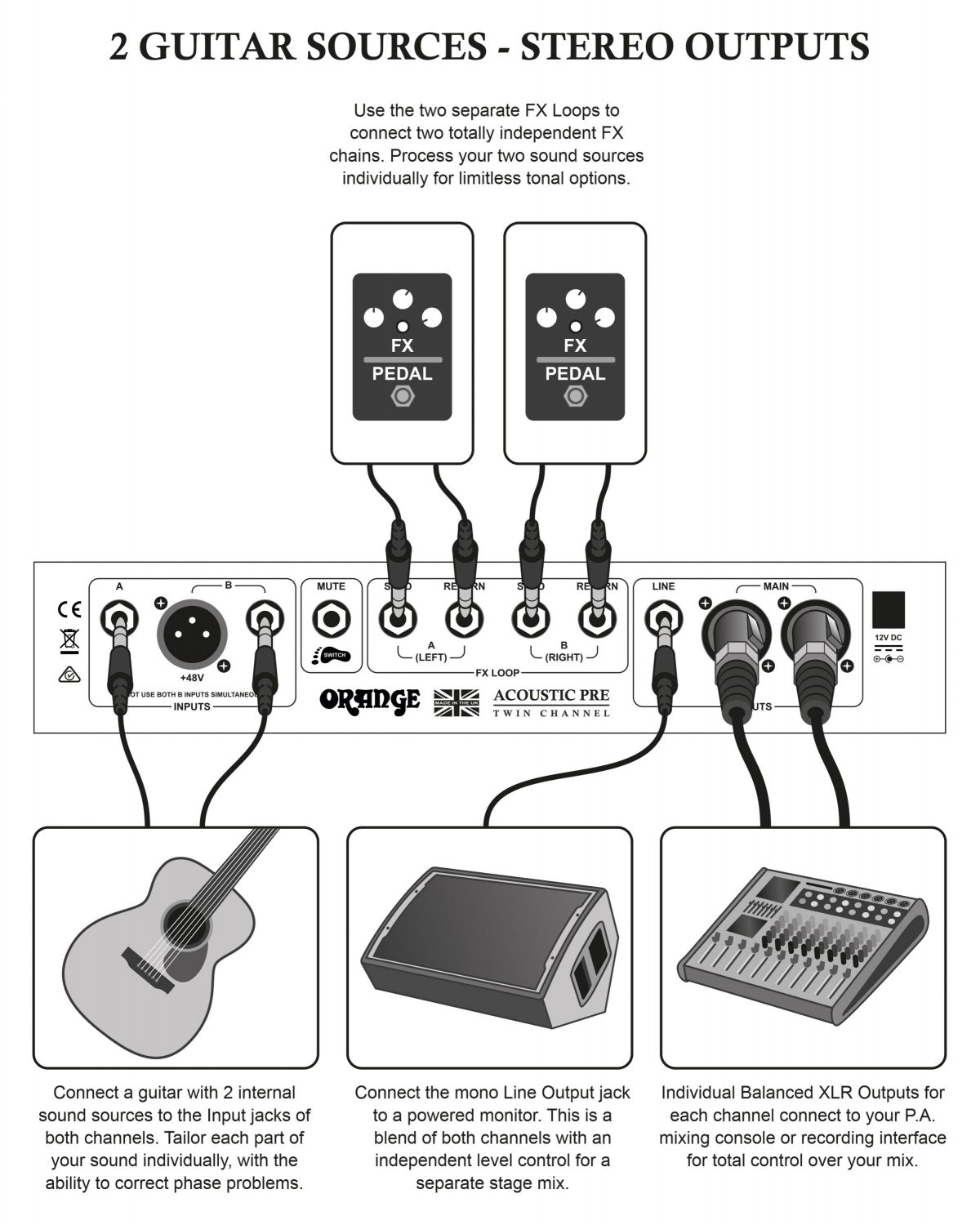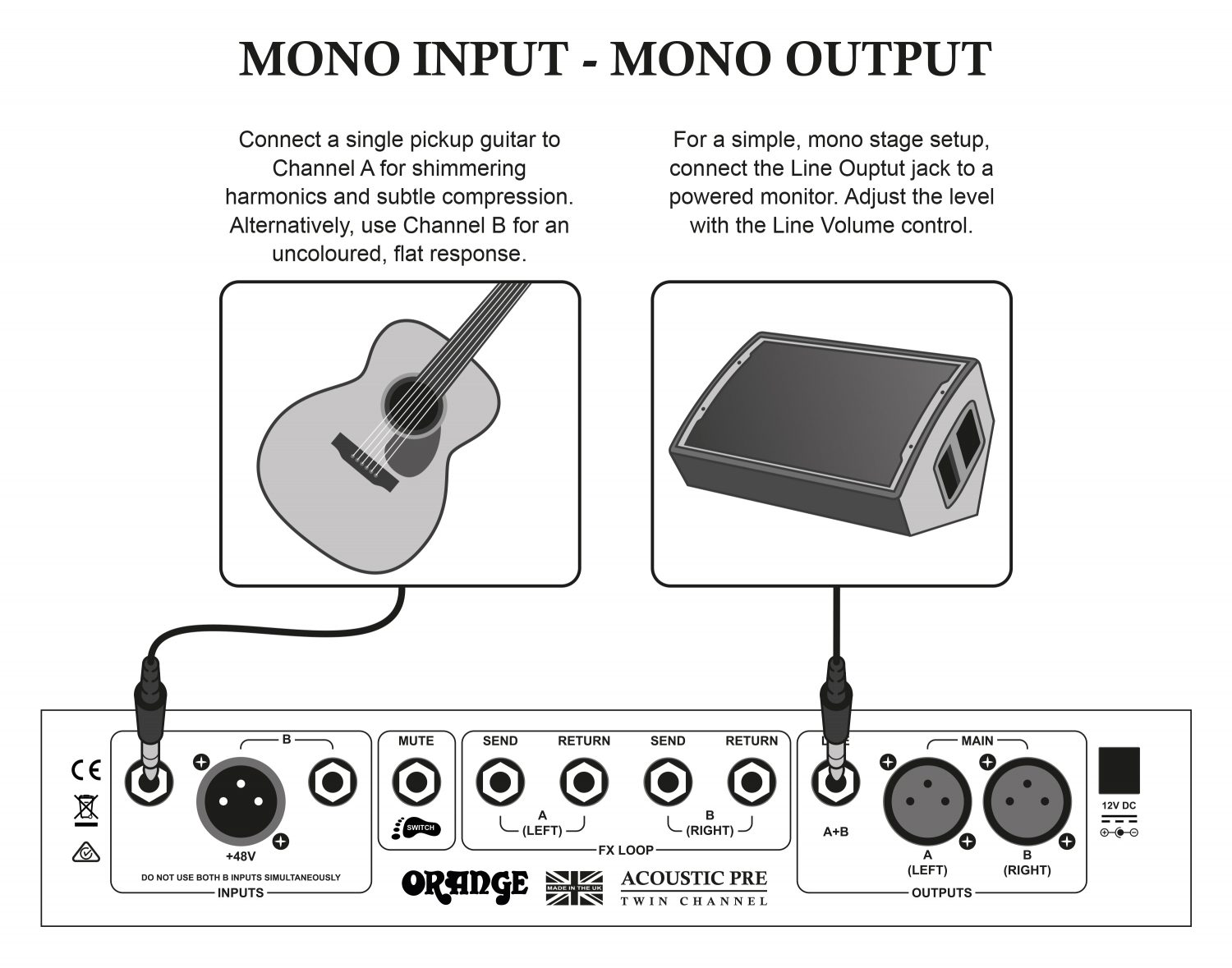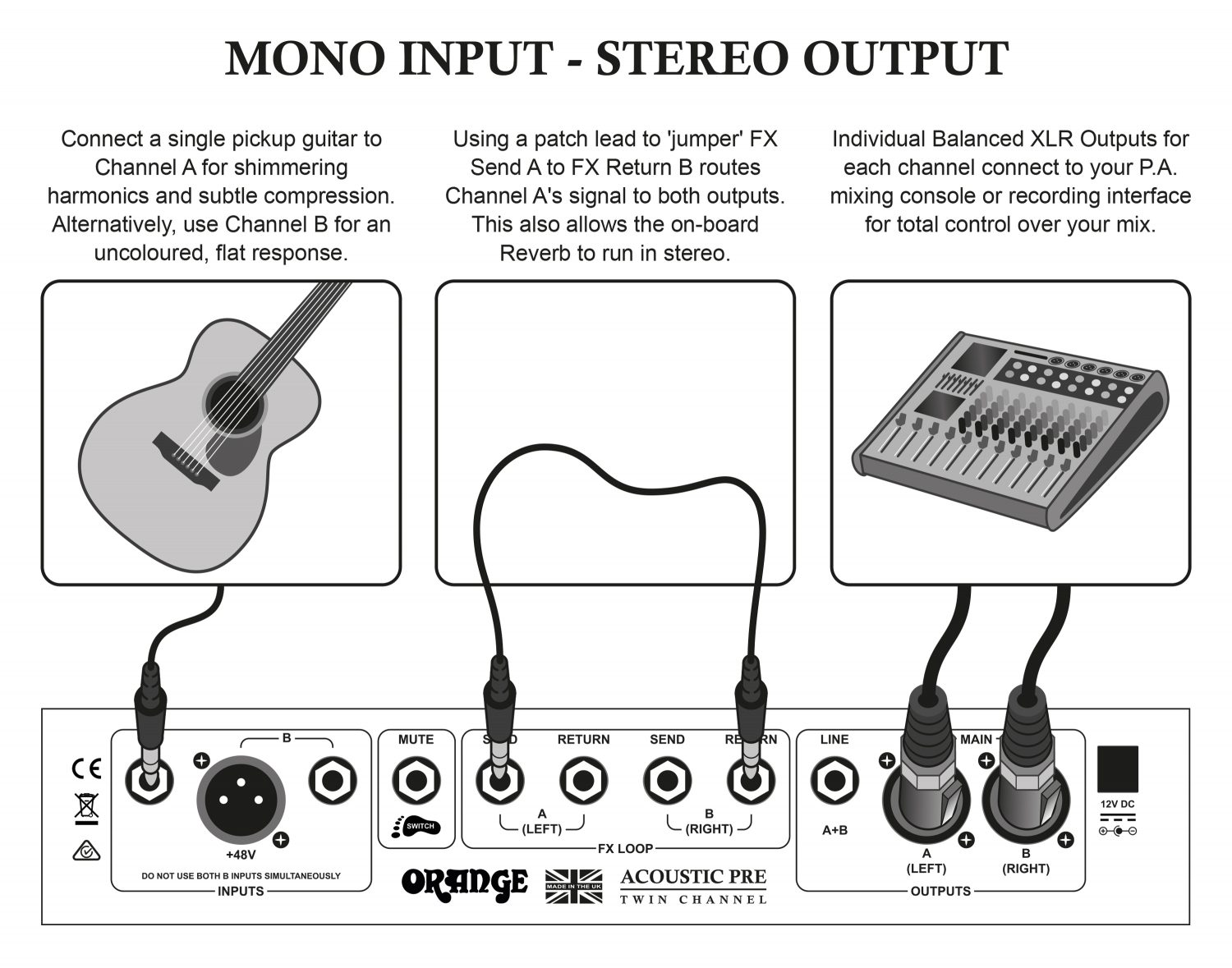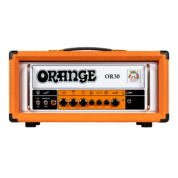Pré-acoustique Twin Channel
Utilisation de votre Acoustic Pre Twin Channel
Caractéristiques du panneau avant
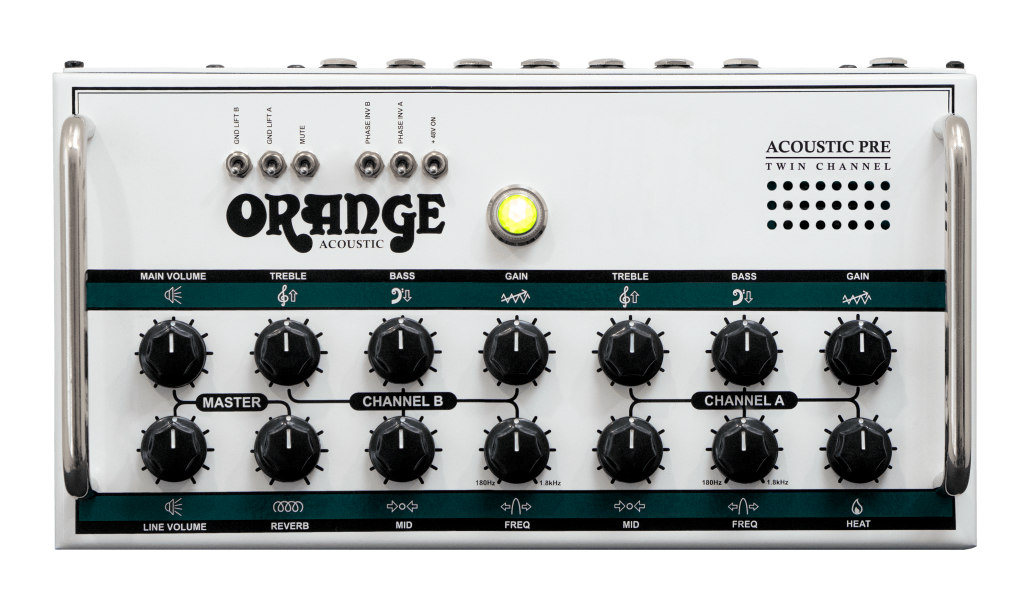
Interrupteurs
ACTIVE L’ALIMENTATION FANTÔME 48V SUR L’ENTRÉE XLR DU CANAL B
Activez l’alimentation fantôme +48V si vous utilisez un microphone à condensateur (vérifiez les spécifications du fabricant).
Canal A
Treble
Ajuste le haut du spectre de +18dB au-dessus de 680 hZ
Basse
Ajuste le plateau de basses de +/- 12dB en dessous de 680 hZ
Gain
Règle le niveau d’entrée du canal A.
Moyen
Ajuste la fréquence sélectionnée par la commande Freq de +/- 18 dB
Fréq
Sélectionne la fréquence centrale de la commande des médiums (180 Hz – 1,8 kHz).
Chaleur
Modifie le niveau de gain de la valve dans les fréquences supérieures en ajoutant des harmoniques et de la compression.
Canal B
Moyen
Ajuste la fréquence sélectionnée par la commande Freq de +/- 18 dB
Basse
Ajuste le plateau de basses de +/- 12dB en dessous de 680 hZ
Treble
Ajuste le haut du spectre de +18dB au-dessus de 680 hZ
Gain
Règle le niveau d’entrée du canal B
Fréq
Sélectionne la fréquence centrale de la commande des médiums (180 Hz – 1,8 kHz).
Maître
Réverbération
Contrôle le niveau de la réverbération numérique intégrée.
Volume de la ligne
Contrôle le niveau de sortie de la sortie ligne mono asymétrique.
Volume principal
Contrôle le niveau de sortie des sorties XLR symétriques.
Caractéristiques du panneau arrière
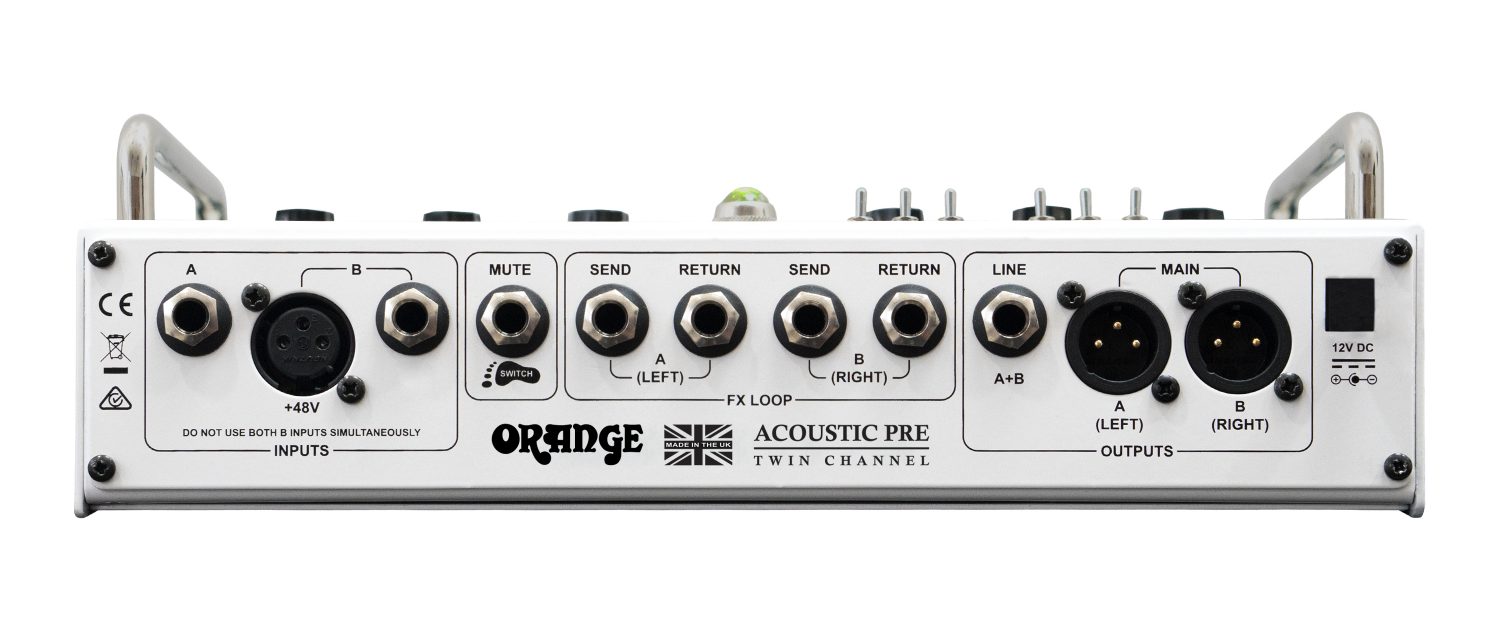
Entrée A
Entrée B
Commutateur à pied pour la sourdine
FX Loop Send A
Retour boucle FX A
FX Loop Send B
Retour de la boucle FX B
Sortie de ligne
Sortie principale A
Sortie principale B
12V DC
1. Entrée A
Entrée jack 1/4″ sur le canal A
2. Entrée B
Entrées Jack 1/4″ et XLR sur le canal B (à ne pas utiliser simultanément)
3. Commutateur au pied pour la sourdine
Permet de contrôler la fonction de sourdine à l’aide d’une pédale de verrouillage (telle que la FS-1).
4. FX Loop Send A
Connecte le canal A à l’entrée d’une unité d’effets.
5. Retour boucle FX A
Connecte la sortie d’une unité d’effets à la sortie du canal A.
6. FX Loop Send B
Connecte le canal B à l’entrée d’une unité d’effets.
7. Retour de la boucle FX B
Connecte la sortie d’une unité d’effets à la sortie du canal B.
8. Sortie de ligne
Mélange les deux canaux pour une sortie mono asymétrique Jack 1/4″.
9. Sortie principale A
Sortie XLR individuelle symétrique pour le canal A
10. Sortie principale B
Sortie XLR individuelle symétrique pour le canal B
11. 12V DC
Prise DC 2.1mm pour connecter l’alimentation 12VDC centre négatif fournie.
Spécifications
| Impédance d’entrée du canal A | 2.2 MΩ |
|---|---|
| Impédance d’entrée XLR du canal B | Minimum 6 KΩ |
| Impédance d’entrée du jack du canal B | 2.2 MΩ |
| Niveau d’envoi FX | -10dBu |
| Impédance du départ FX | Moins de 150 Ω |
| Niveau de retour FX | -10dBu |
| Impédance de retour FX | 10 KΩ |
| Niveau de sortie ligne | -10dBu |
| Impédance de sortie de ligne | Moins de 150 Ω |
| Niveau de sortie principal | .+4dBu |
| Impédance de sortie principale | Moins de 60 Ω |
| Alimentation électrique | 12 VDC Centre Négatif |
| Consommation de courant | 750 milliampères |
| Dimensions | 29x15x9cm |
| Poids | 2.5Kg |
Fusibles et vannes
| VALVE | 1 x ECC83/12AX7 |
|---|---|
| FUSIBLE GLOBAL | T1A H |
| FUSIBLE HT | T63 milliampères |



